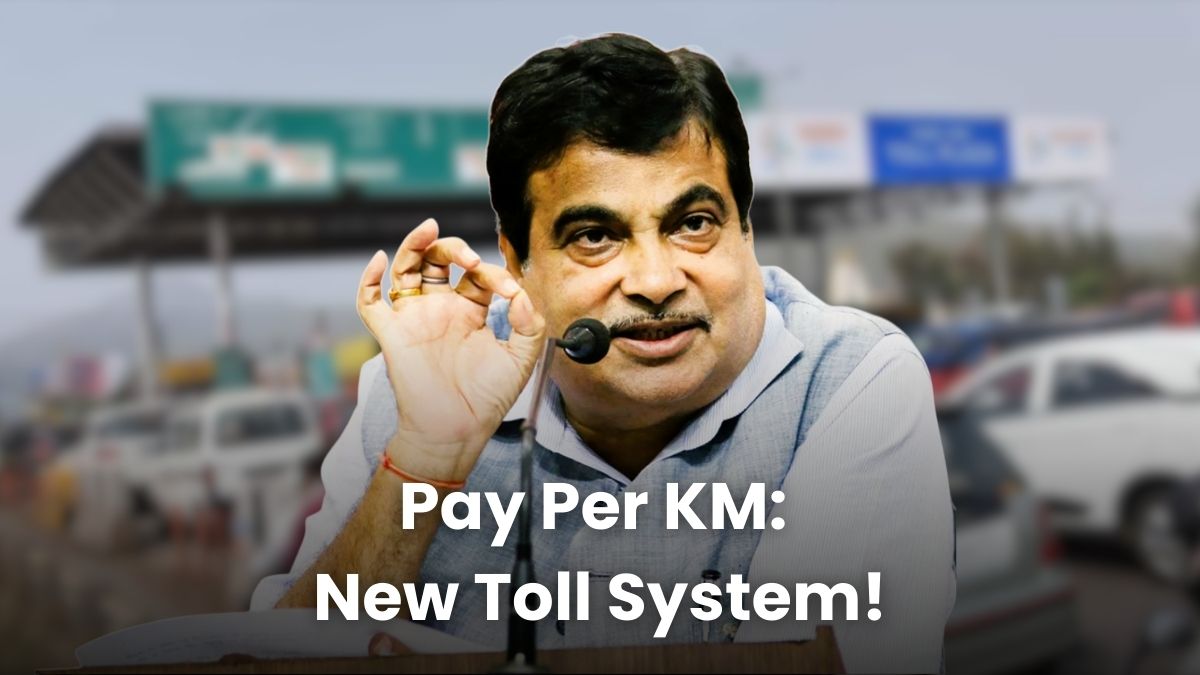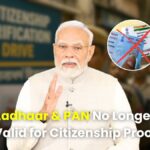New Toll Tax Rule – Big changes are coming for people who drive on national highways and expressways in India. The government is rolling out a new toll system where drivers will pay based on how far they travel, not fixed amounts at toll booths. This new rule will start taking effect from July 2025 and aims to make the toll system fairer, faster, and more transparent.
What’s Changing in the Toll System?
Until now, drivers paid a fixed toll at every toll plaza they crossed, regardless of how much of the highway they actually used. This often felt unfair, especially for short-distance travellers who still had to pay the full toll.
But now, the Ministry of Road Transport and Highways has decided to switch to a per-kilometer pricing model. The goal is to make toll charges more reasonable, reduce waiting time at toll booths, and improve overall efficiency on the roads.
Why Did the Government Make This Change?
There were a few major problems with the old toll system:
- People had to pay the full toll even for using just a few kilometers of the road.
- Long lines at toll plazas caused delays and traffic jams.
- Manual toll collection led to revenue leakages and errors.
- There was no transparency about how much money was being collected and why.
By shifting to a GPS and Fastag-based toll system, the government hopes to solve these issues. It’s a more tech-driven and transparent way to collect tolls fairly.
How Will the New Toll Charges Work?
With the new system, the amount you pay depends on how far you travel. The GPS in your vehicle will track your entry and exit points on a highway, and the toll will be automatically deducted from your Fastag wallet.
Here’s a general idea of the new rates based on vehicle type:
- Cars and SUVs – around 90 paise per kilometer
- Light commercial vehicles – about 1.20 rupees per kilometer
- Buses – roughly 1.50 rupees per kilometer
- Trucks (2 axles) – about 1.70 rupees per kilometer
- Heavy vehicles – up to 2 to 2.50 rupees per kilometer
- Two-wheelers – exempt from toll as of now
These rates might change slightly depending on the highway or expressway, but this gives you a basic idea of what to expect.
How Will This GPS-Based Tolling System Work?
Here’s a simple explanation:
- Every vehicle must have a Fastag and a GPS device.
- As your vehicle enters a highway, your location is marked.
- When you exit, your total distance is calculated.
- The toll is automatically deducted from your Fastag account.
- You’ll get an SMS or app notification with the toll details.
You won’t have to stop at any toll booth anymore, which means faster travel and less fuel wastage.
When and Where Will This New Rule Start?
The new toll rule won’t happen all at once. It will be rolled out in phases across India:
- Phase 1 (July to Sept 2025) – Delhi-NCR and expressways
- Phase 2 (Oct to Dec 2025) – Maharashtra, Gujarat, Rajasthan
- Phase 3 (Jan to Mar 2026) – South Indian highways
- Phase 4 (Apr to Jun 2026) – Eastern and Northeastern states
- Phase 5 (July 2026 onwards) – All national highways across the country
By mid-2026, the entire country will be covered under the new toll system.
What Should Drivers Do Now?
If you drive often or run a transport business, you should get ready in advance:
- Make sure your vehicle has a valid Fastag.
- Keep your vehicle details updated on the Fastag website.
- Install a GPS tracking device if required.
- Keep checking SMS alerts and app notifications for toll deductions.
- Follow official updates from NHAI or MoRTH for any changes.
Some Concerns People Have
With any new system, there are bound to be a few doubts. Here are a few concerns that have come up:
- Privacy issues – Will the GPS track your every move?
- Device cost – Older vehicles may need new GPS units.
- Technical errors – What if toll is wrongly deducted?
The government has said that data will be securely stored and encrypted, older vehicles may get subsidies for GPS installation, and there will be a process to resolve complaints if tolls are wrongly charged.
This new toll rule is one of the biggest overhauls in India’s road transport system. It aims to make driving on highways more efficient and fair for everyone. By paying only for the distance you travel, you’ll save money if you drive short routes, and you’ll no longer have to stop at toll booths.
If you’re someone who travels regularly, it’s a good idea to stay updated and prepare early. Make sure your Fastag and GPS setup are ready to go before the rollout hits your region.






